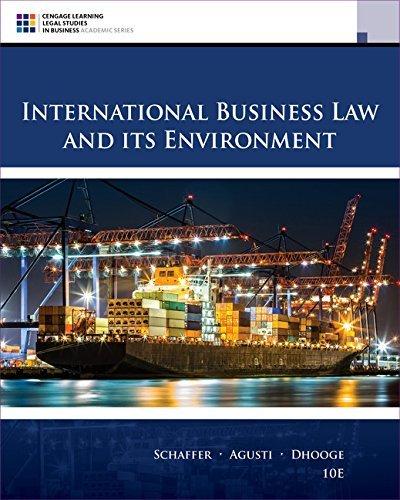1. Which vehicle is more American-a Chevrolet Silverado assembled in Mexico or a BMW made in South...
Question:
a. What factors do you think might influence a modern automotive company in determining a location for a new plant? Access to low wages? A productive labor force? Shipping costs? Political risk? Trade barriers? Discuss.
b. Assume the United States and Japan are unable to resolve a trade war over trade in automobiles and auto parts. Acting unilaterally, the United States imposes a 35 percent tariff, or higher, on imported components and on vehicles with a final assembly outside the United States. What do you think the reaction would be by foreign governments?
c. In the above question, who is being affected? Local manufacturers? Dealers? Consumers?
d. Given that it can take billions of dollars and several years to build a modern automotive plant, how might global manufacturers respond? Who might bear the immediate costs?
e. If U.S. tariffs were high enough to protect U.S. automotive manufacturers over a long period of time, how do you think this might affect the long-term health and competitiveness of the industry? Could you see any impact on the U.S. lead in innovation, design, and quality? Discuss.
2. Your company is a U.S. multinational corporation with a 40 percent share of the world market for its product. Over the past decade, management has invested heavily trying to get its products into the Japanese market. Despite all of its efforts, the company still has less than a 10 percent share of the Japanese market, and only a small fraction of relevant Japanese stores carry its products. Company investigations show that its major Japanese competitor has a virtual monopoly there and has violated Japanese antitrust laws by fixing prices and refusing to sell to any store that carries your firm's products. Most distributors and retailers are linked to your competitor through keiretsu relationships. Management believes that by having the Japanese market all to itself, the competitor is able to maintain sufficiently high prices in Japan to permit them to undersell your company in the United States. Apparently, the Japanese government simply "looks the other way." Moreover, your firm has been effectively restrained by the bureaucracy that administers government procurement contracts in Japan. As a result, management estimates that it has lost several billion dollars in exports since the company first entered the Japanese market. Your competitor responds that it is not the only producer in Japan, that the market there is very competitive, and besides, it also outsells your firm's products in several other Asian countries.
a. Explain what is meant by "Keiretsu" practices in Japan. How did they develop and what cultural and societal forces may have been at work? How have Keiretsu practices affected the Japanese distribution system for domestic and foreign products?
b. If you petition for a Section 301 action, do you think the USTR will begin an investigation? What political factors in the United States might affect the USTR's decision to investigate? Are the market share statistics relevant to your case? What other data or information will be important? What is the attitude of the current U.S. administration toward the use of Section 301?
c. How do you think joint ventures with foreign firms and strategic alliances between Japanese and foreign firms might have affected the traditional keiretsu system?
Corporation
A Corporation is a legal form of business that is separate from its owner. In other words, a corporation is a business or organization formed by a group of people, and its right and liabilities separate from those of the individuals involved. It may... Distribution
The word "distribution" has several meanings in the financial world, most of them pertaining to the payment of assets from a fund, account, or individual security to an investor or beneficiary. Retirement account distributions are among the most...
Fantastic news! We've Found the answer you've been seeking!
Step by Step Answer:
Related Book For 

International Business Law And Its Environment
ISBN: 9781305972599
10th Edition
Authors: Richard Schaffer, Filiberto Agusti, Lucien J. Dhooge
Question Posted:





